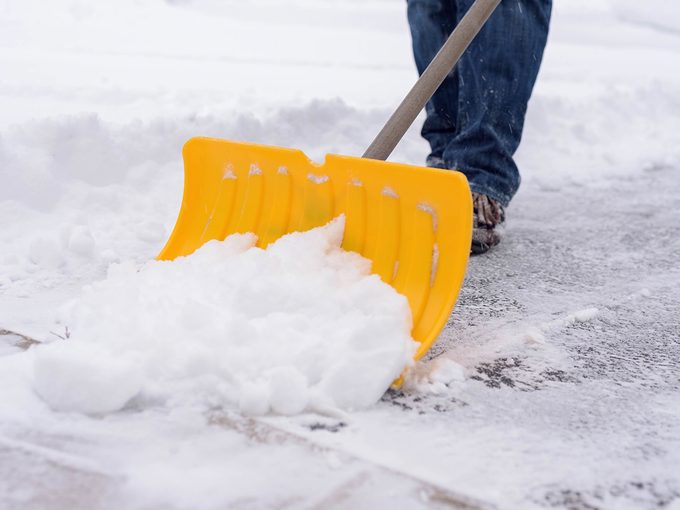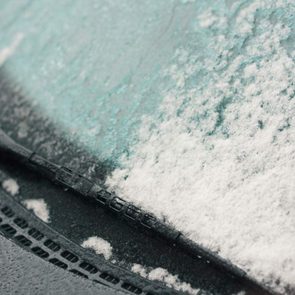De-Icing Your Driveway: When to Use Salt, Sand or Another Ice Melter
With snow comes ice, and with ice comes slipping—which means it's time to think about keeping your driveway and sidewalks safe. Here's a primer on when to salt your driveway, and when to consider other de-icing methods.

De-icing with Driveway Salt
Ideally, you’ll sprinkle salt on your driveway before a heavy snowfall. When you’ve missed your window of opportunity, however, it’s best to shovel the driveway before applying salt—starting with a bare driveway will require less de-icer in the long run.
Although driveway salt’s affordable price point makes it an attractive de-icing option, it can damage your lawn or garden. Canadians use about five million tons of rock salt each year, but it can harm plants, contaminate water and, in severe cases, sicken or kill wildlife. You should also keep in mind, according to Scientific American, when temperatures drop below -18° Celsius (zero Fahrenheit), ice can’t be dissolved by salt.
Sand
Sand will increase traction and is more garden-friendly than driveway salt. Just be sure to clean it up properly in the spring, as it can easily clog drains or sewers, and because it absorbs contaminants like oil and chemicals. Gravel is another possible solution.
Other Driveway Salt Alternatives
Though salt remains the most accessible means of de-icing your driveway, other options exist. (You might also consider the pros and cons of heated driveways.) A rule of thumb: The more eco-friendly the product, the higher its cost will be.
Most combine driveway salt with five other common materials:
- Calcium magnesium acetate: CMA is a green alternative that is salt-free and biodegradable. However, it is slow acting and only works in mild temperatures.
- Calcium chloride: It won’t hurt your plants, but it can corrode metal and hurt the tender paws of your pets. Works well in cold weather. Don’t track this into your home since it can leave a residue on carpets and shoes.
- Potassium acetate: It’s not that harmful since it is biodegradable, non-corrosive and non-toxic. But it’s pricey and won’t perform well in extreme cold.
- Magnesium chloride: This salt works well in cold weather but use sparingly because too much will make your pavement wet. Can damage concrete.
- Urea: Also known as carbamide or carbonyl diamide, this de-icer can burn your lawn and garden. Since it’s high in nitrogen it also causes algae bloom in waterways. Should be avoided.
Two Major Considerations When De-Icing Your Driveway
Always keep the minimum effective temperature (MET) of ice melters in mind. If sub-zero temperatures are rare where you live, you don’t need an ice-melter with a MET capacity of -31° C/ -25 ° F.
Use ice melters sparingly; throwing more down won’t melt ice any faster. And don’t shun the greenest method of snow and ice removal: shovelling. De-icers can’t melt through compacted snow or built-up ice, so the less there is, the more effective they’ll be.
Next, find out how to remove snow from your car quickly.






